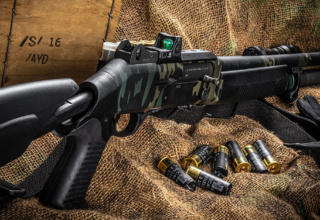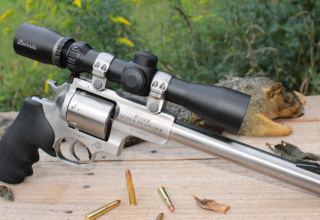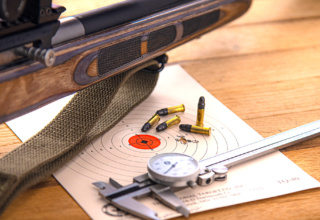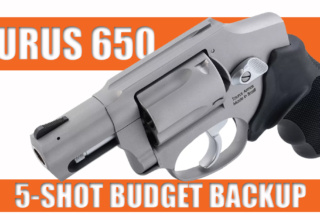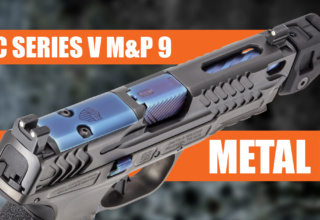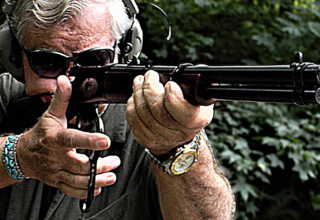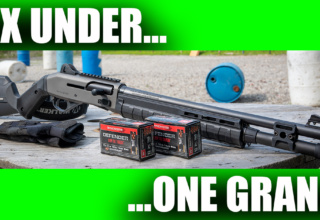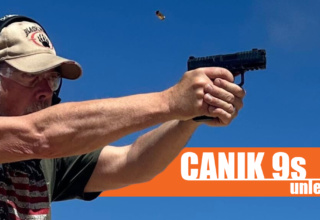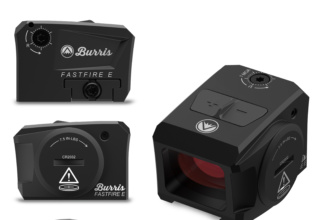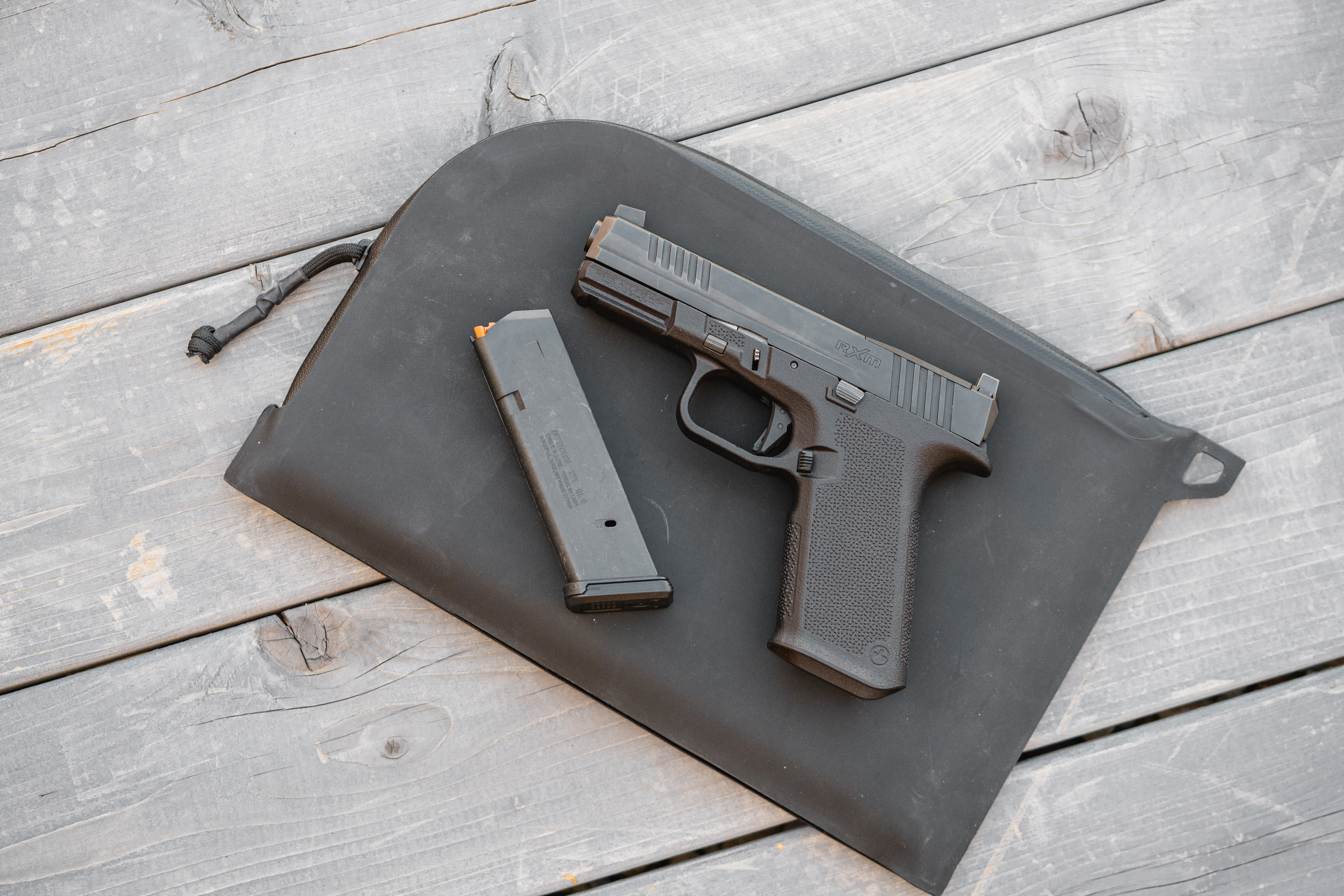Most any shotgun will deliver decisive results for personal defense, but not all defensive loads perform decisively
by Bob Campbell
I could spend as much time countering myths as discussing reality when it comes to the shotgun. Safe to say, there are misconceptions. Among these is one I heard often as a young cop.
“Well, the shotgun will either kill you or not hurt you badly.”
Ask Kevin Campbell, son of the late Chief Kenneth Campbell, who took a shotgun blast that would have crippled most people. He underwent several surgeries, only to survive and thrive.
The shotgun, like anything made by man, is not infallible but it is the most effective firearm for home defense. The shotgun has a good natural point and handles quickly. This doesn’t mean you do not need to train and practice, but a trained shooter has a great advantage over an equally well-trained shooter armed with a handgun. The shotgun offers the ability to make a hit on fast moving adversaries and to move fire quickly to engage more than one threat.
Shotgun loads do not carry as far as handgun or rifle loads and typically do not penetrate as far into building materials. Penetration in a soft target is a good thing when the threats that may be faced are considered. A homeowner doesn’t need to penetrate vehicle sheet metal but a bulked-up member of our protein-fed, ex-con criminal class may reach three hundred pounds of hard muscle or they may be heavily clad.
The single greatest predictor of survival is prior training. Choosing a proper firearm and load is also important. The shotgun’s ability to launch a pattern of multiple projectiles — actually, a string that hurtles through the air — offers devastating effect and tremendous shock from multiple hits.

The shotgun must be carefully aimed at close range; however, the design and ease of handling make getting on target quick and getting a hit easier than with any other long gun. I have tested most of the available buckshot loads from the major makers, as well as budget loads. Only complete reliability is acceptable.
Selecting a shotgun is a choice that may be made with a high degree of confidence. Even economy-grade pump-action shotguns are reliable and useful. When it comes to self-loaders, the picture is different than it was a generation ago. There are many semi-autos — Benelli, Beretta, Mossberg, Remington, and others — that are reliable with a wide range of loads. Even the humble single-shot or double barrel may be used but having only one or two cartridges is cutting it close in a defensive encounter. Four or five is better. That’s why I have come to strongly favor the semi-auto shotgun.

I do a good bit of practice in handling and firing with light loads, including bird shot. Some self-loaders will run well with both light and heavy loads and some will not. I also qualify buckshot performance. An open choke shotgun intended for home defense isn’t suitable for taking deer at 35 yards, but it will cut a ragged rat hole at 10 yards. The shotgun must be patterned to determine if the load strikes high, low, or to one side or the other.
We are not always presented with a perfect target squared to the shooter. We may have an adversary behind cover or with only a small part of the body exposed. We need to understand how the load patterns, or the width of the buckshot balls’ dispersion on the target. Despite the recommendation of those that should know better, bird shot is not a suitable defense load. Bird shot throws a pattern of hundreds of light pellets and has proven capable of penetrating 3 to 6 inches of water or gelatin with only a few of the shells reaching the furthest depth. This is poor performance for personal defense and certainly not suitable for stopping motivated attackers.

Most of us will choose a 12-gauge shotgun for home defense. There are many loads available, including reduced recoil, magnum, slugs, and even flares. The 20-gauge is a viable alternative for those who like a lighter shotgun with less recoil. Double-ought (00) buckshot in the standard 2 ¾-inch load will deliver eight or nine pellets in a pattern that increases with range. At 10 yards, most any open choke Remington 870 will deliver eight 00 pellets from Hornady’s Critical Defense load into a pattern approximately 5.5×6 inches. Fifteen yards is the optimal range of effectiveness with a buckshot pattern.
Occasionally, one shotgun may produce a slightly tighter pattern than others. Shotguns fitted with screw-in choke tubes may use a full choke tube to increase the tightness of the pattern.

Buckshot doesn’t follow the same rules as lighter shot sizes and a tight choke may not necessarily increase pattern density. Some folks like to recommend #4 buckshot or #1 buckshot. I think that, at home defense ranges, either is viable. In my testing, I have noted that smaller buckshot sizes throw patterns two to three times larger, on average, than #00. A friend pointed out that while this is true as one example, Winchester #1 buckshot threw a large pattern with its sixteen balls — the center was tight and cohesive. Fiocchi #4 buckshot was much the same — a tight center with many outlaying balls. This is a subject worthy of study. About half the shot is centered on the target and about half is outlying. If your mission also includes keeping running coyotes dusted off the homestead, the Hornady #4 Varmint Express does the business. If you need an effective load beyond normal buckshot distance, the Federal Flite Wad load offers good results to 35 yards.

For home defense, the selection is simple: a load that is reliable and throws an acceptable pattern at the longest possible distance you will encounter in the home. Some inexpensive loads will do just that. I like Fiocchi #00 buckshot, available in a hard-plastic storage box with eighty cartridges in ten-round boxes. The 2 ¾-inch shells are plenty strong for personal defense and generate all the recoil you’ll want to endure.
There are three types of modern loads to consider: standard velocity, magnum, and reduced recoil loads. The Federal 12-pellet short magnum load in 2 ¾-inch size is useful in a Benelli Super 90 — a shotgun with an operating system that helps harness and reduce recoil. The Benelli shotgun also has good weight. For most uses and most shotguns, the reduced recoil loads are the better choice. These are designed to offer less recoil in standard riot guns. The shotguns are shorter and lighter than sporting guns and may exhibit painful recoil. Reducing velocity from 1500 to 1200 fps results in much greater comfort and control. Patterns with reduced recoil buckshot are tighter as well. Among the leaders in this field is Federal. Federal PD132 with the Flite Control wad is a reduced recoil load that has given excellent results in testing and in use by police agencies. Powerful and controllable at the same time, this is a first-class personal defense load.

Hornady has developed the Critical Defense 12-gauge load. This load uses eight pellets. The lower pellet count reduces recoil and makes for a tighter pattern. It is also useful in automatic shotguns and is among the tightest patterning 00 buckshot ammo you can find. Fiocchi offers nickel-plated buckshot in both full power and reduced recoil loads. Plated pellets such as these deform less in the bore.
Load selection is important, but practice is vital. The shotgun should be kept chamber-empty in the home. Shotgun design hasn’t changed much in the last fifty years and a shotgun may fire if dropped from a sufficient height, even if on safe. A study by a major metropolitan agency confirmed this. I own a few good shotguns and keep the four-shot shotguns fully loaded and the six- and seven-shot shotguns downloaded by a shell. The shotgun is in the safe during the day and by the bed stand at night.

The shooter should practice grasping the shotgun quickly, keeping the muzzle pointed in a safe direction. The bolt is pulled back and released when danger is imminent.
Also, practice loading and unloading the shotgun.
On the firing range, I practice getting center hits quickly. I use the front bead and place it on the center of the target at 5, 7, and 10 yards. I shoulder the shotgun quickly and fire. Lean into the shotgun to control recoil. I also practice navigating the home. Be certain you can cover the home without tripping or snagging the shotgun. I take long dragging steps and keep out of doorways, avoiding standing in the center of a light funnel. Never lead a corner with a shotgun — an adversary lying in wait may grasp the barrel and disarm you. If you keep the muzzle pointed safely upward, you may quickly move to a firing position. If the assailant were to grasp the barrel, you may quickly lever the butt stock up and butt-stroke the adversary.

Folks tend to get too close to the intruder. We know you should call 911 and wait but we also know that we don’t call 911 for every bump in the night or raccoon on the porch, and some areas have slow LE response times. If there are children or elderly family in the house, we need to check on them. A shotgun is a great force leveler. The shotgun is powerful, versatile, user-friendly as far as handling goes, but demands the shooter develop skill.

Before you rely on a handgun or rifle for home defense, consider a shotgun. Get training, choose a good buckshot load, and practice. You will be as well-armed as possible with a firearm.
Shotgun pellet caliber/size (average)
- #8 / .09 in.
- #7 ½ / .095 in.
- #6 / .11 in.
- #5 / .12 in.
- #4 / .13 in.
- #2 / .15 in.
- #1 / .16 in.
- #BB / .18 in.
- #BBB / .19 in.
- #T / .20 in.
Buckshot caliber/size (average)
- #4 / .24 in.
- #3 / .25 in.
- #2 / .27 in.
- #1 / .30 in.
- #0 / .23 in.
- #00 / .32 in.
- #000 / .36 in.
Lead pellets per ounce
- #2 – 87
- #6 – 225
- #7 ½ – 350
- #9 – 585
Firing test penetration (in water)
- Federal 00 Buckshot 1200 fps (reduced recoil), 20 inches
- Hornady Critical Defense 1505 fps, 17.5 inches
- Fiocchi #4 Buckshot 2 ¾ inch 1250 fps, 16 inches
- Winchester #1 Buckshot 1090 fps, 17 inches
- Winchester 7 ½ Bird shot 1349 fps, 6 inches
20 Gauge comparison:
- Federal #3 Buckshot 3-inch Magnum 1150 fps, 15.5 inches


